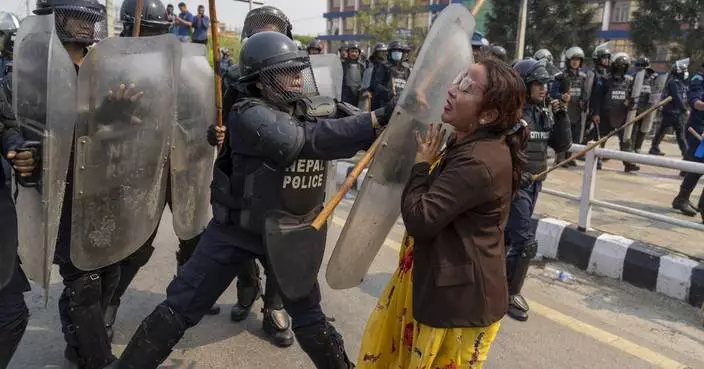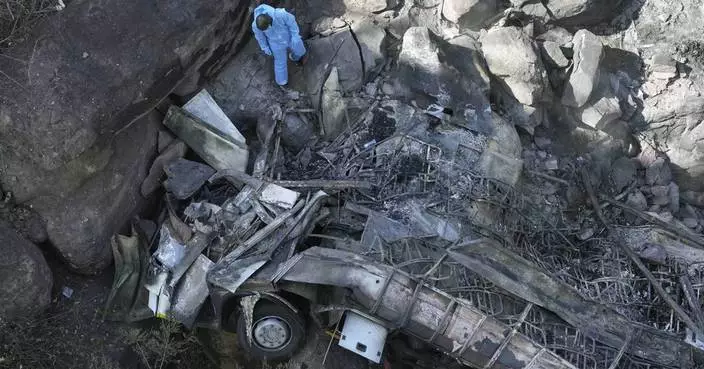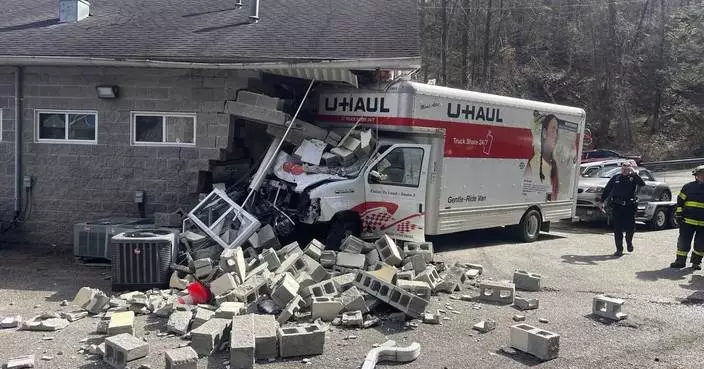A passenger plane carrying 71 people from Bangladesh crashed and burst into flames as it landed Monday in Kathmandu, Nepal's capital, killing dozens of people with others rushed to area hospitals, officials said.
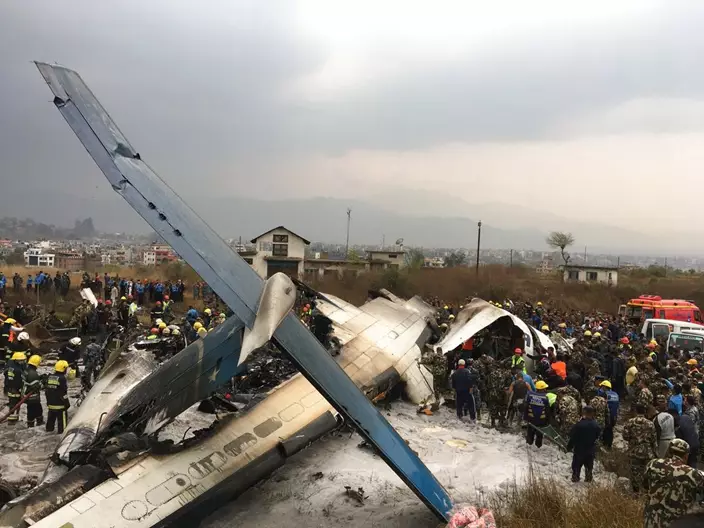
Nepalese rescuers stand near a passenger plane from Bangladesh that crashed at the airport in Kathmandu, Nepal, Monday, March 12, 2018. (AP Photo/Niranjan Shreshta)
The death toll remained unclear amid the chaos of the crash and the rush of badly injured victims to nearby hospitals. Brig. Gen. Gokul Bhandari, the Nepal army spokesman, said 50 people had died and the fate of the others was unknown. But a police official, speaking on condition of anonymity because he was not authorized to talk to the media, said at least 38 people had died, 23 had been injured and 10 were unaccounted for.
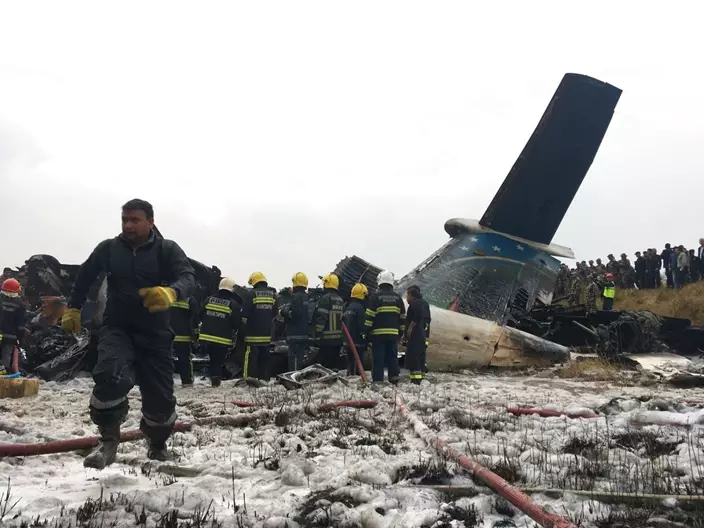
Nepalese rescuers stand near a passenger plane from Bangladesh that crashed at the airport in Kathmandu, Nepal, Monday, March 12, 2018. (AP Photo/Niranjan Shreshta)
An AP journalist who arrived at the scene soon after the crash saw the US-Bangla Airlines twin-propeller plane broken into several large pieces, with dozens of firefighters and rescue workers clustered around the wreckage in a grassy field near the runway. Hundreds of people stood on a nearby hill, staring down at what remained of the Bombardier Dash 8.
The plane swerved repeatedly as it prepared to land in Kathmandu, said Amanda Summers, an American working in Nepal. The crowded city sits in a valley in the Himalayan foothills.
"It was flying so low I thought it was going to run into the mountains," said Summers, who watched the crash from the terrace of her home office, not far from the airport. "All of a sudden there was a blast and then another blast."
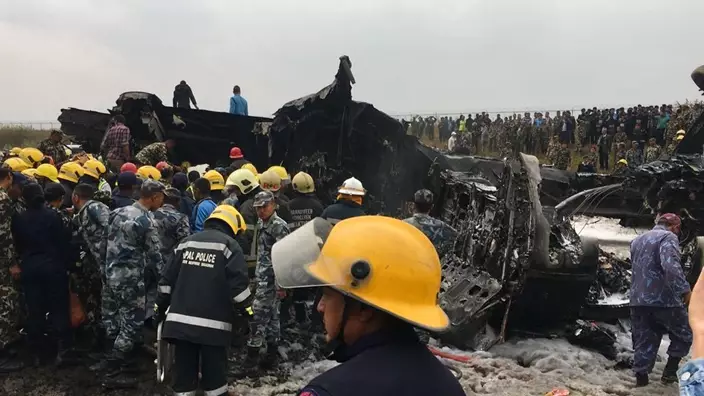
Nepalese rescuers stand near a passenger plane from Bangladesh that crashed at the airport in Kathmandu, Nepal, Monday, March 12, 2018. (AP Photo/Niranjan Shreshta)
Fire crews put out the flames quickly, perhaps within a minute, she said, though for a time clouds of thick, dark smoke rose into the sky above the city.
The plane had circled the airport twice as it waited for clearance to land, Mohammed Selim, the airline's manager in Kathmandu, told Dhaka-based Somoy TV station by telephone.
US-Bangla Airlines operates Boeing 737-800 and smaller Bombardier Dash 8 Q-400 planes.
The airline, part of US-Bangla Group, is based in the Bangladeshi capital, Dhaka, and flies to several domestic and international destinations. The parent company is involved in a number of industries, including real estate, education and agriculture.
Kathmandu's airport has been the site of several deadly crashes. In September 2012, a Sita Air turboprop plane carrying trekkers to Mount Everest hit a bird and crashed shortly after takeoff, killing all 19 on board.
UNITED NATIONS (AP) — Russia and Ukraine on Monday traded blame before the United Nations Security Council for the attacks on Europe’s largest nuclear power plant, which the head of the International Atomic Energy Agency said have put the world “dangerously close to a nuclear accident.”
Without attributing blame, IAEA Director General Rafael Mariano Grossi said his agency has been able to confirm three attacks against the Zaporizhzhia Nuclear Power Plant since April 7.
“These reckless attacks must cease immediately,” he told the Security Council. “Though, fortunately, they have not led to a radiological incident this time, they significantly increase the risk … where nuclear safety is already compromised.”
The remote-controlled nature of the drones that have attacked the plant means that it is impossible to definitively determine who launched them, Grossi told reporters after the meeting.
“In order to say something like that, we must have proof,” he said. “These attacks have been performed with a multitude of drones.”
Zaporizhzhia sits in Russian-controlled territory in southeastern Ukraine and has six nuclear reactors.
Fears of a nuclear catastrophe have been at the forefront since Russian troops occupied the plant shortly after invading in February 2022. Continued fighting between Russian and Ukrainian forces — as well as the tense supply situation at the plant — have raised the specter of a disaster.
Ukraine and its allies on Monday again blamed Russia for dangers at the site, with the United States saying, “Russia does not care about these risks.”
“If it did, it would not continue to forcibly control the plant,” U.S. deputy ambassador Robert Wood told the Security Council, which met at the initiative of the U.S. and Slovenia.
Russia, for its part, said Ukraine was to blame for the attacks.
“The IAEA’s report does not pinpoint which side is behind the attacks,” Russia’s U.N. Ambassador Vassily Nebenzia said. “We know full well who it is.”
“Over the last few months, such attacks not only resumed,” Nebenzia said, “they significantly intensified.”
Ukraine’s ambassador to the U.N., Sergiy Kyslytsya, called the attacks “a well-planned false flag operation by the Russian Federation,” which he alleged Russia had designed to distract the world from its invasion of its neighbor.
The Zaporizhzhia facility is one of the 10 biggest nuclear plants in the world. Fighting in the southern part of Ukraine where it is located has raised the specter of a potential nuclear disaster like the one at Chernobyl in 1986, where a reactor exploded and blew deadly radiation across a vast area.
Neither Russia nor Ukraine in recent months has been able to make significant advances along the 1,000-kilometer (620-mile) front line crossing eastern and southern Ukraine. Drones, artillery and missiles have featured heavily in what has become a war of attrition.
Russia and Ukraine have frequently traded accusations over the Zaporizhzhia plant.
The most recent strikes did not compromise the facility, which is designed to withstand a commercial airliner crashing into it, the IAEA said.
The plant’s six reactors have been shut down for months, but it still needs power and qualified staff to operate crucial cooling systems and other safety features.
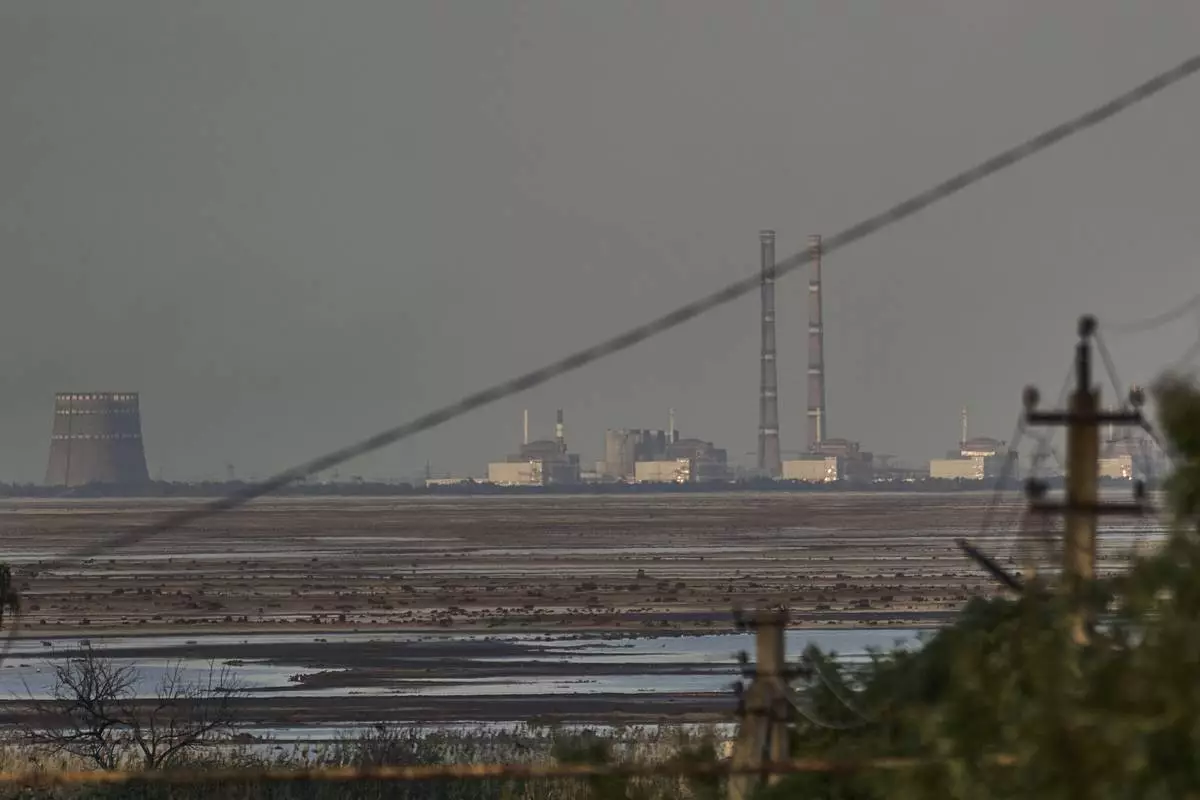
FILE - The Zaporizhzhia nuclear power plant, Europe's largest, is seen in the background of the shallow Kakhovka Reservoir after the dam collapse, in Energodar, Russian-occupied Ukraine, Tuesday, June 27, 2023. Officials at the Russian-controlled Zaporizhzhia Nuclear Power Plant said that the site was attacked Sunday April 7, 2024, by Ukrainian military drones, including a strike on the dome of the plant’s sixth power unit. (AP Photo/Libkos, File)
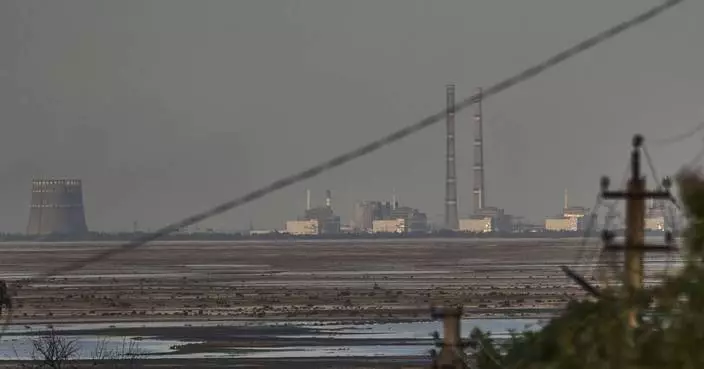
IAEA warns that attacks on a nuclear plant in Russian-controlled Ukraine put the world at risk
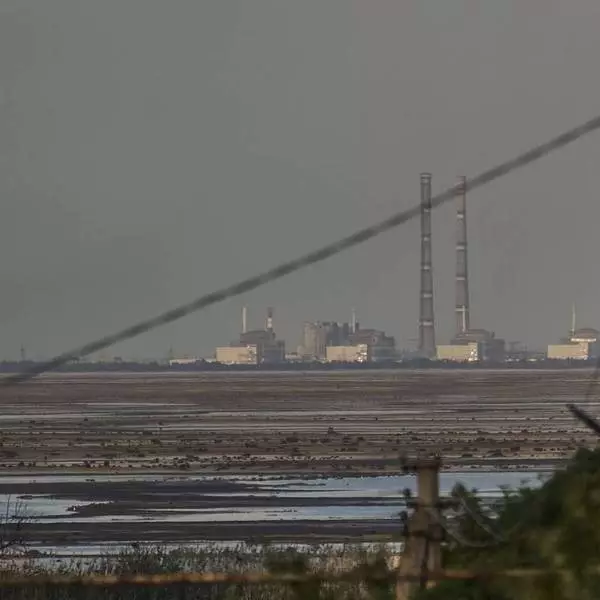
IAEA warns that attacks on a nuclear plant in Russian-controlled Ukraine put the world at risk









